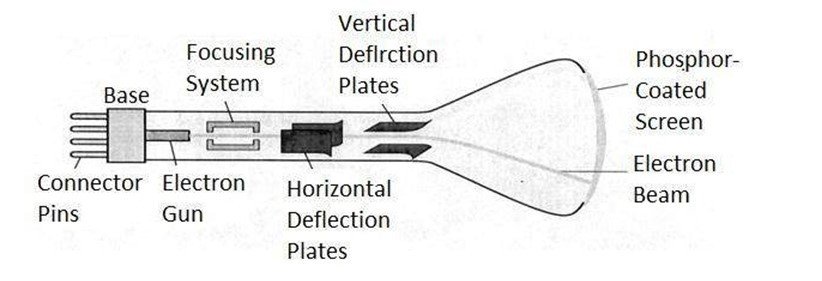CRT vs LCD Difference
Summary: Difference Between CRT and LCD is that CRT is a desktop/pc monitor that contains a cathode-ray tube. A cathode-ray tube (CRT) is a large, sealed glass tube.
While A LCD is a desktop/pc monitor that uses a liquid crystal display to produce images. These monitors produce sharp, flicker-free images.
The main component of CRT is the vacuum tube while in LCD is the main component is liquid crystal.

Comparison Chart
| BASIS FOR COMPARISON | CRT | LCD |
|---|---|---|
| Stands For | CRT stands for “Cathode Ray Tube“ | LCD stands for “Liquid Crystal Display“. |
| Major components | Vacuum glass tube, phosphor screen, electron gun, deflection plates. | Glass plates, nematic liquid crystal, internal light source. |
| Size | CRT is weighted, bulky, and large in size. | LCD is light, compact, and thin in size. |
| Weight | Heavier | Lighter |
| Power Consumption | It consumes High power. | It consumes low power. |
| Power Consumption | It consumes High power. | It consumes low power. |
| Image Flickering | Image Flickering is there in CRT. | No Image Flickering is there on LCD. |
| Color | CRT is like Black. | LCD is like White. |
| Image Retention | Image Retention is not there in CRT. | Image Retention is there on LCD. |
| Cost | It is less expensive. | It is more expensive. |
| Image Forming | Electron Gun is used to form images. | Liquid crystals are used to form images. |
| Response | CRT having a good response. | LCD has a slow response. |
| Benefits | Panels weigh less than plasma; use less energy; light; thinner; emits less electromagnetic radiation; no bleeding or smearing | Easy to move as cannot be wall-mounted; good picture quality; cheaper; wide viewing quality; sharper image quality; multiple resolutions |
| Limitations | Picture slightly less natural and “filmlike” than plasmas; slower refresh rate; limited viewing angle; blacks are brighter; susceptible to burn-out and image persistence; dead or stuck pixels may appear | Heavier, small screens; old technology (obsolete); susceptible to burn-ins |
| Where Used | CRT is used in Televisions and was used in old computer monitors. |
LCD is used in flat screens. |
CRT(Cathode Ray Tubes)

-
- It is an evacuated glass
- An electron gun at the rear of the tube produce a beam of electrons which is directed towards the screen of the tube by a high voltage typically 15000 to 20000 volts
- The inner side screen is coated with phosphor substance which gives light when it is stroked by
- Control grid controls the velocity of electrons before they hit the
- The control grid voltage determines how many electrons are actually in the electron beam. The negative the control voltage is the fewer the electrons that pass through the
- Thus control grid controls the Intensity of the spot where the beam strikes the
- The focusing system concentrates the electron beam so it converges to a small point when hits the phosphor coating.
- Deflection system directs beam which decides the point where the beam strikes the
- The deflection system of the CRT consists of two pairs of parallel plates which are vertical and horizontal deflection
- The voltage applied to vertical and horizontal deflection plates is control vertical and horizontal deflection respectively.
There are two techniques used for producing images on the CRT screen:
- Vector scan/Random scan
- Raster scan display
